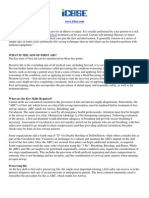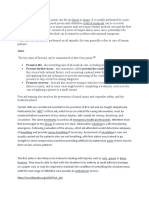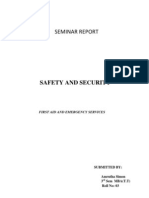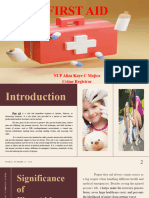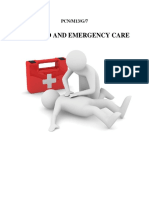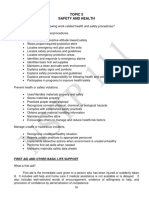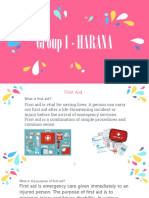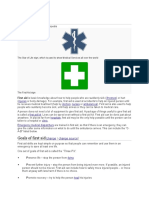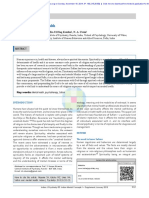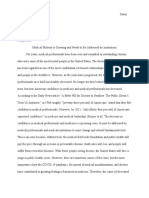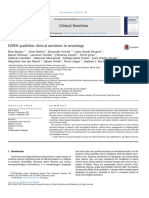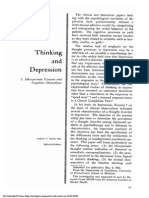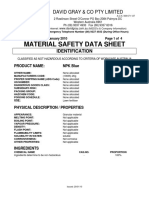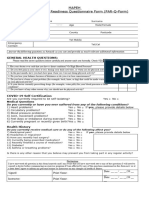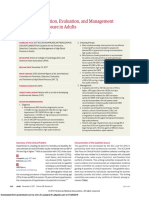First aid is the assistance given to any person suffering a sudden illness or injury,[1] with care
provided to preserve life, prevent the condition from worsening, and/or promote recovery. It includes
initial intervention in a serious condition prior to professional medical help being available, such as
performing CPR while awaiting an ambulance, as well as the complete treatment of minor
conditions, such as applying a plaster to a cut.
There are many situations which may require first aid, and many countries have legislation,
regulation, or guidance which specifies a minimum level of first aid provision in certain
circumstances. This can include specific training or equipment to be available in the workplace (such
as an automated external defibrillator), the provision of specialist first aid cover at public gatherings,
or mandatory first aid training within schools. First aid, however, does not necessarily require any
particular equipment or prior knowledge, and can involve improvisation with materials available at
the time, often by untrained persons.
Aims
The key aims of first aid can be summarized in three key points, sometimes known as 'the three
P's':-[12]
Preserve life: the overriding aim of all medical care, including first aid, is to save lives and
minimize the threat of death.
Prevent further harm: also sometimes called prevent the condition from worsening,
or danger of further injury, this covers both external factors, such as moving a patient away
from any cause of harm, and applying first aid techniques to prevent worsening of the condition,
such as applying pressure to stop a bleed becoming dangerous.
Promote recovery: first aid also involves trying to start the recovery process from the illness
or injury, and in some cases might involve completing a treatment, such as in the case of
applying a plaster to a small wound.
Key Skills
Certain skills are considered essential to the provision of first aid and are taught ubiquitously.
Particularly the "ABC"s of first aid, which focus on critical life-saving intervention, must be rendered
before treatment of less serious injuries. ABC stands forAirway, Breathing, and Circulation. The
same mnemonic is used by all emergency health professionals. Attention must first be brought to
the airway to ensure it is clear. Obstruction (choking) is a life-threatening emergency. Following
evaluation of the airway, a first aid attendant would determine adequacy of breathing and
provide rescue breathing if necessary. Assessment of circulation is now not usually carried out for
patients who are not breathing, with first aiders now trained to go straight to chest compressions
(and thus providing artificial circulation) but pulse checks may be done on less serious patients.
�Symbols
Although commonly associated with first aid, the symbol of a red cross is an official protective
symbol of the Red Cross. According to theGeneva Conventions and other international laws, the use
of this and similar symbols is reserved for official agencies of the International Red Cross and Red
Crescent, and as a protective emblem for medical personnel and facilities in combat situations. Use
by any other person or organization is illegal, and may lead to prosecution.
The internationally accepted symbol for first aid is the white cross on a green background shown
below.
Some organizations may make use of the Star of Life, although this is usually reserved for use by
ambulance services, or may use symbols such as the Maltese Cross, like theOrder of Malta
Ambulance Corps and St John Ambulance. Other symbols may also be used.
Conditions that often require First Aid
Altitude sickness, which can begin in susceptible people at altitudes as low as 5,000 feet,
can cause potentially fatal swelling of the brain or lungs.[13]
Battlefield first aidThis protocol refers to treating shrapnel, gunshot wounds, burns, bone
fractures, etc. as seen either in the traditional battlefield setting or in an area subject to damage
by large-scale weaponry, such as a bomb blast.
Bone fracture, a break in a bone initially treated by stabilizing the fracture with a splint.
Burns, which can result in damage to tissues and loss of body fluids through the burn site.
Cardiac Arrest, which will lead to death unless CPR preferably combined with an AED is
started within minutes. There is often no time to wait for the emergency services to arrive as 92
percent of people suffering a sudden cardiac arrest die before reaching hospital according to the
American Heart Association.
Choking, blockage of the airway which can quickly result in death due to lack of oxygen if the
patients trachea is not cleared, for example by the Heimlich Maneuver.
Childbirth.













